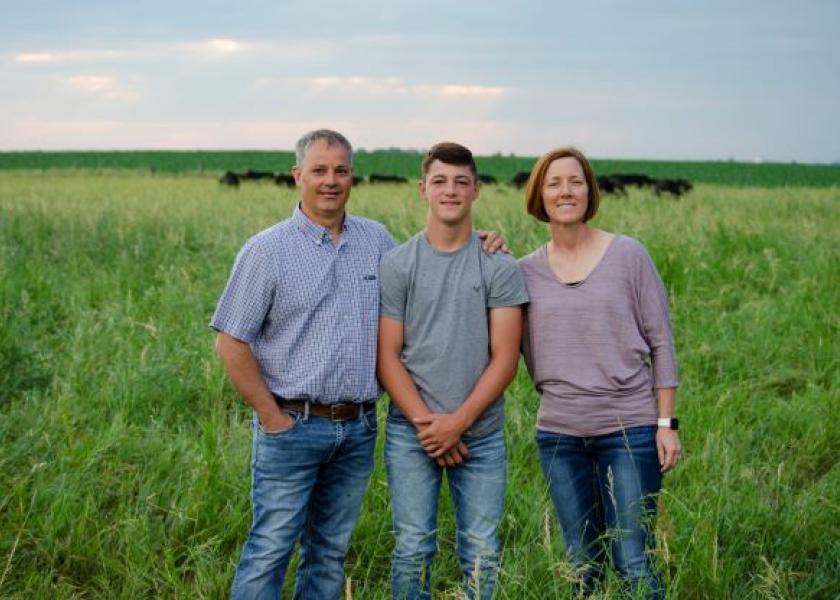Robbins Named ICA Outstanding Commercial Producer

Robbins Land and Cattle, is no stranger to ICA
Since taking part in the Iowa Cattlemen’s Leadership Program in 2014, Justin Robbins and his wife, Lacie, have been active members of the organization, serving in many leadership and volunteer roles.
Justin has been the ICA District 8 Director since 2017 and part of the ICA Membership Committee and Foreign Animal Disease Committees since 2015. He has served on the Greene County Cattlemen’s Board since 2014 and is currently serving as president.
Despite all of these commitments, Justin, Lacie and their son, McKinley, are also dedicated to improving their rural Scranton cattle operation.
The Robbins have approximately 200 head of purebred Angus and commercial cows and finish approximately 75 head a year in their feedlot. The other calves are marketed after weaning.
Within their operation they use performance records, including identification of cows and calves as well as birth, weaning and yearling weights. Carcass data is also utilized to continue to improve their genetics.
In order to manage all of this data, the farm has invested in electronic animal identification (EIDs). “Electronic identification helps make the process more efficient when running those animals through the chute,” says Justin.
For more than 15 years, these records have been used to choose herd bulls. “We select certain genetics for the feedlot performance side of our business and other sires to help produce our replacement heifers,” says Lacie.
The Robbins family is part of a cooperator herd with two ranches in the western United States and primarily purchase bulls from those ranches. The family also raises their own bulls and has hosted seedstock sales on the farm in addition to consigning bulls to the ICA’s Bull and Heifer Evaluation Program in the past.
The operation utilizes artificial insemination (AI) to further improve herd quality and says that improved sire selection has been one of the most profitable improvements to their operation.
On the female side of the herd, performance records have been used for 10 years to make decisions regarding culling and replacement heifers. According to Justin and Lacie, disposition is one of the most important criteria used to select replacement females, in addition to feet, udders and maternal blood lines. When culling, the family looks at production, weaning weights and again, disposition.
In addition to AI, embryo transfer is used to produce seedstock for their own operation as well as their cooperator ranches.
Calving occurs twice each year, during the spring and fall. Justin says, “As we started this process, we realized it didn’t just help spread out the workload, but the bulls and cash flow.” This plan allows Justin to maximize pasture usage and herd management.
The operation utilizes rotational grazing throughout the growing season, then grazes corn stalks and bean stubble with cover crops as long as possible. A total mixed ration (TMR) is fed as needed, but no implants or feed grade antibiotics are used.
For several years, the Robbins family has been finishing out their steers and working with a local locker to process them for retail cuts that can be sold direct-to-consumer. These cuts can be sold as individual packages and shipped nationwide. Justin and Lacie recently began raising Berkshire hogs on their farm in order to offer their customers pork, as well.
From pasture to plate and farm to fork, the Robbins family works hard towards continuous improvement, which has resulted in a regenerative, diversified, profitable operation to be proud of.







